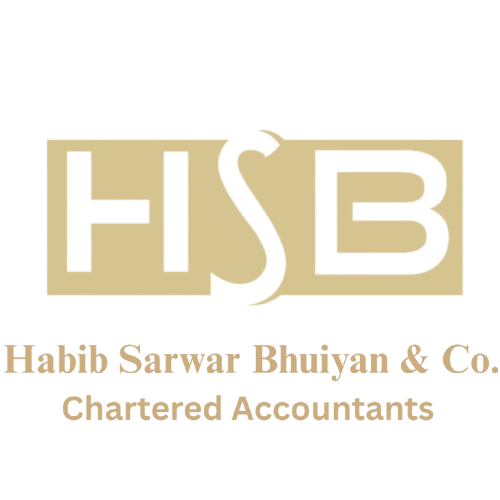In today’s globalized financial world, accurate asset valuation is more than just a compliance requirement—it’s a cornerstone of sound financial reporting, informed decision-making, and investor confidence. For businesses operating across borders or aspiring to attract global investors, adherence to the International Financial Reporting Standards (IFRS) is essential. One of the most complex and crucial aspects of IFRS is asset valuation.
In this in-depth blog post, we’ll unpack what asset valuation entails under IFRS, the key standards that guide it, valuation models, fair value concepts, impairment testing, and revaluation requirements. Whether you’re an entrepreneur, CFO, auditor, or accounting student, this guide will help you better understand how to manage and report asset values under IFRS.
What is Asset Valuation?
Asset valuation is the process of determining the fair or carrying value of a company’s assets for the purpose of financial reporting, investment analysis, or sale. Under IFRS, asset valuation isn’t a one-size-fits-all approach. Instead, it is governed by a series of standards that prescribe different valuation methods depending on the type of asset—such as tangible fixed assets, investment properties, intangible assets, financial instruments, and inventories.
Key IFRS Standards Governing Asset Valuation
Understanding asset valuation begins with knowing the right IFRS standards to apply. Here’s a breakdown of major IFRS standards relevant to asset valuation:
| IFRS Standard | Asset Type | Key Focus |
|---|---|---|
| IAS 16 | Property, Plant, and Equipment (PPE) | Cost vs. Revaluation model |
| IAS 38 | Intangible Assets | Recognition and amortization |
| IAS 40 | Investment Property | Fair value vs. cost model |
| IFRS 13 | Fair Value Measurement | Framework for measuring fair value |
| IAS 2 | Inventories | Lower of cost and net realizable value |
| IFRS 9 | Financial Instruments | Fair value through P&L or OCI |
| IAS 36 | Impairment of Assets | Recoverable amount vs. carrying value |
1. Property, Plant, and Equipment (IAS 16)
Under IAS 16, businesses can choose between two models for valuing their PPE:
Cost Model
The asset is carried at its original cost less accumulated depreciation and impairment losses.
Revaluation Model
Assets are carried at a revalued amount, being the fair value at the date of revaluation less subsequent depreciation and impairment. Revaluations must be made with sufficient regularity to ensure the carrying amount does not differ materially from fair value.
Example:
A company buys machinery for $100,000. After 3 years, the fair value rises to $120,000. Under the revaluation model, the asset can be adjusted to $120,000, and the $20,000 surplus goes to revaluation reserve in equity.
2. Intangible Assets (IAS 38)
Valuing intangible assets such as patents, licenses, software, or goodwill is trickier due to their non-physical nature.
- Initially recognized at cost if acquired separately.
- Can be measured using the revaluation model if there is an active market, which is rare for most intangibles.
- Amortization is required for finite life assets; impairment testing is required for indefinite life assets (e.g., brand names).
Goodwill is never amortized but tested for impairment annually under IAS 36.
3. Investment Property (IAS 40)
An investment property (e.g., land or buildings held to earn rentals or capital appreciation) can be valued using:
- Cost Model (same as IAS 16)
- Fair Value Model, where the asset is revalued to market value each reporting period, and changes are recorded in profit or loss (not equity).
Most businesses prefer the fair value model for transparency and investor appeal.
4. Inventories (IAS 2)
Inventories are valued at the lower of cost or net realizable value (NRV).
- Cost includes purchase price, import duties, transportation, and handling.
- NRV is the estimated selling price in the ordinary course of business less estimated costs of completion and sale.
If NRV drops below cost due to damage, obsolescence, or market decline, inventories are written down accordingly.
5. Financial Instruments (IFRS 9)
Under IFRS 9, financial assets are classified and measured as:
- Amortized Cost
- Fair Value through Other Comprehensive Income (FVOCI)
- Fair Value through Profit or Loss (FVTPL)
Valuation depends on the business model and the contractual cash flows.
Example:
A business holds shares for trading. These are measured at FVTPL, meaning changes in fair value affect profit or loss directly.
6. Fair Value Measurement (IFRS 13)
IFRS 13 provides a single framework for measuring fair value across all IFRS standards.
Definition of Fair Value:
“The price that would be received to sell an asset or paid to transfer a liability in an orderly transaction between market participants at the measurement date.”
Fair Value Hierarchy:
| Level | Inputs |
|---|---|
| Level 1 | Quoted prices in active markets |
| Level 2 | Observable inputs (e.g., similar assets in inactive markets) |
| Level 3 | Unobservable inputs (e.g., management assumptions) |
The more observable the input, the more reliable the fair value.
7. Impairment Testing (IAS 36)
When an asset’s carrying value exceeds its recoverable amount, it is considered impaired.
Recoverable Amount = Higher of:
- Fair value less costs to sell
- Value in use (present value of future cash flows)
Impairment losses are recorded in the profit or loss statement and can be reversed (except for goodwill) if circumstances improve.
Example:
A factory machine with a carrying amount of $500,000 generates reduced cash flow, and its value in use is now $400,000. The company must recognize a $100,000 impairment loss.
Real-World Challenges in Asset Valuation
1. Subjectivity in Fair Value
Especially with Level 3 inputs, where management estimates dominate, consistency and transparency become issues.
2. Changing Market Conditions
Fluctuating economic conditions can cause volatility in asset values. Regular revaluation is needed, especially for investment properties and financial instruments.
3. Cost vs. Benefit
Small businesses often find the cost of obtaining fair valuations too high, even though IFRS demands it for certain assets.
4. Complex Disclosures
IFRS requires detailed disclosures around the valuation techniques, assumptions, and risks—often a pain point for preparers.
Why Accurate Asset Valuation Matters
- Investor Confidence: Reliable valuations help investors gauge a company’s real worth.
- Loan Decisions: Banks use asset valuations to assess creditworthiness.
- Tax Compliance: Authorities may use asset values for depreciation, capital gains, or transfer pricing.
- Merger & Acquisition (M&A): Accurate asset values are critical during due diligence and deal pricing.
- Financial Statement Integrity: Prevents manipulation or overstatement of asset values.
Best Practices for IFRS Asset Valuation
- Engage Qualified Valuers: For fair value or revaluation model, always use certified professionals.
- Stay Updated: IFRS interpretations evolve. Keep abreast of new guidance.
- Maintain Documentation: Record assumptions, valuation models, and support data.
- Perform Regular Revaluations: Ensure assets reflect true economic value.
- Coordinate with Auditors Early: Avoid surprises during audit season.
- Use Technology: Leverage valuation software or financial modeling tools for consistency and speed.
Bangladeshi Context: Why It’s Even More Crucial
In Bangladesh, more companies are adopting IFRS/IAS standards either voluntarily or under regulatory pressure (especially listed companies). The ICAB (Institute of Chartered Accountants of Bangladesh) mandates IFRS compliance for financial reporting. Local and international investors now expect transparency and comparability—key objectives of IFRS.
Improper or outdated asset valuation not only leads to compliance risks but can also jeopardize investor trust, loan approvals, and tax scrutiny.
Conclusion
Asset valuation under IFRS is far more than a technical accounting task—it’s a vital function that influences decision-making, investor trust, and regulatory compliance. While the standards may seem complex, they offer a framework that balances reliability, relevance, and consistency in financial reporting.
If your business is navigating the intricate world of asset valuation, you don’t have to do it alone. Working with seasoned professionals who understand both international standards and local regulatory environments can save you time, money, and risk.
Work with the Experts: Habib Sarwar Bhuiyan & Co., Chartered Accountants
At Habib Sarwar Bhuiyan & Co. (HSBBD), we’ve helped hundreds of clients across Bangladesh with IFRS-compliant asset valuations, financial reporting, and audit services.
Our team of Chartered Accountants and valuation experts can help you:
- Apply the right IFRS standards for your asset types
- Determine fair value using accepted models
- Handle complex disclosures and documentation
- Liaise with auditors and regulators
- Ensure your financials are investor-ready
Whether you’re a startup, SME, or a listed entity, we ensure your assets are accurately and compliantly valued—every time.
👉 Email us at mhabib7374@gmail.com for a free consultation.
Let us help you unlock the real value of your assets.




